Visiting Da Nang’s Son Tra peninsula between April and June when the Than mat (Millettia ichthyochtona) flower blooms, tourists will have a chance to see troops of red-shanked doucs (Pygathrix nemaeus) going down the mountain to find food.
Da Nang is not only famed for its beautiful beaches but also for being home to the red-shanked douc – “the queen” of the primates
In Vietnam, the primate lives mainly north of the Truong Son mountain range from Nghe An to Kon Tum provinces. Son Tra peninsula is home to between 300 and 400 of the animal.
Located some 10 km northeast of Da Nang, beautiful Son Tra peninsula sits in the background of the Da Nang gulf.
Covering 4,400ha, Son Tra forest, the only one in Vietnam which has the ecosystem of a natural forest and the sea, is home to hundreds of species of animals, including 22 rare and endangered ones, including the red-shanked douc - a native of Indochina.
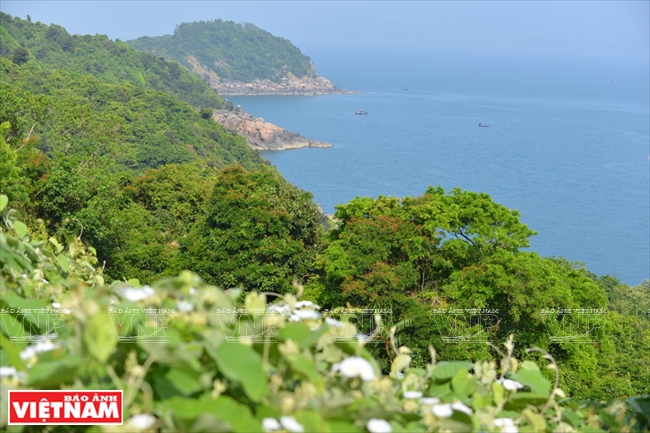
Son Tra with a diverse flora and favorable climate creates an ideal habitat for the red-shanked douc. Photo: Thanh Hoa
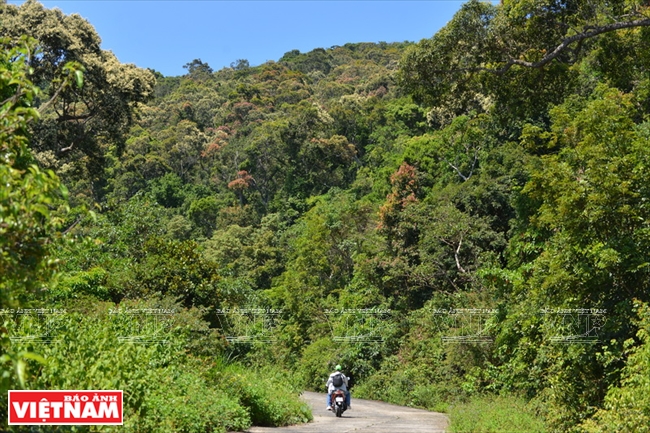
From April to June, the trees in Son Tra shed their leaves,
offering a plentiful source of food for the red-shanked douc. Photo: Thanh Hoa
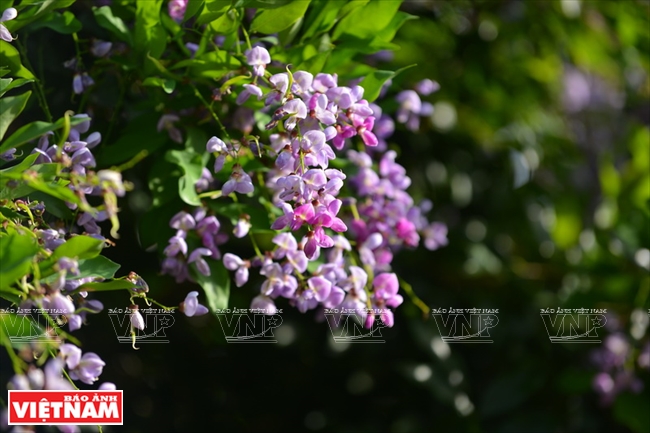
The Than mat (Millettia ichthyochtona) flower, which blooms from April to June,
is a favorite food of the primate. Photo: Thanh Hoa
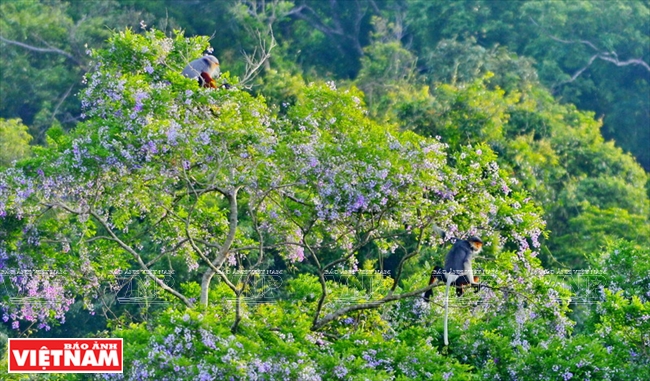
Beautiful scene of a red-shanked douc in purple Than mat trees. Photo: Thanh Hoa
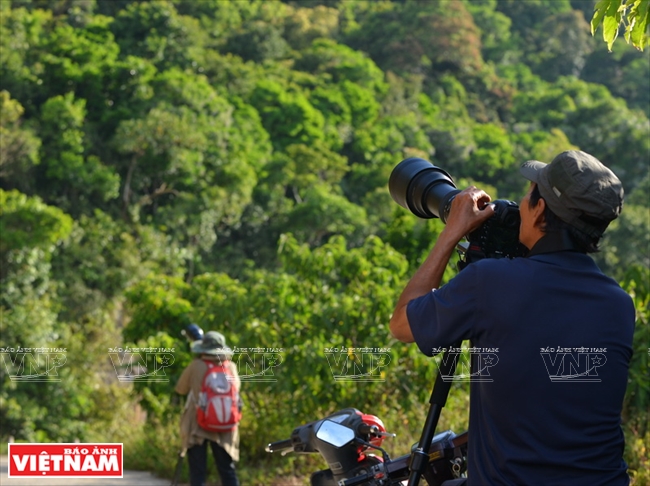
Son Tra forest is a favorite destination for douc photographers in Da Nang. Photo: Thanh Hoa |
From April to June, Son Tra is charmingly beautiful when the trees shed their leaves, the Than mat blooms are purple and the red-shanked doucs appear on low mountain slopes near the sea. They move in groups of five or seven, eating tender leaves. In the sunshine through forest canopies, the animals look so special with their colorful fur, expressive faces, clear eyes, snub noses and long white whiskers.
The species has expressions and habits similar to humans, like sitting with their arms clasping their knees or sitting with a leg stretched and the other bent.
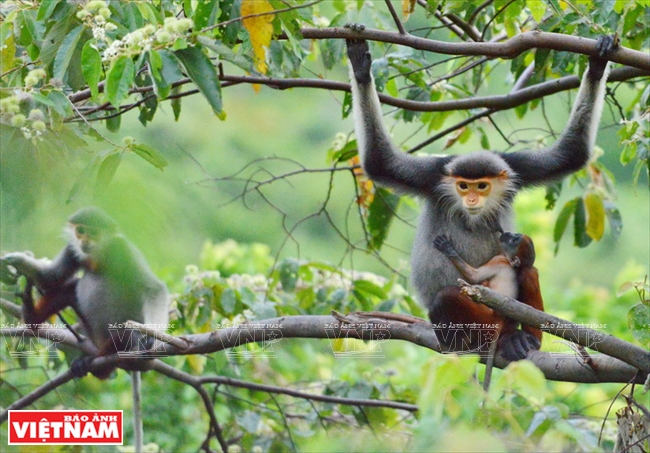
A new-born douc with its mother. Photo: Thanh Hoa
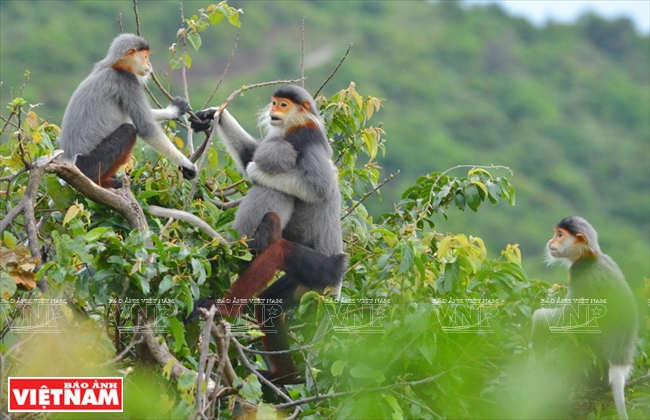
A little douc holds tightly to its mother while she moves from tree to tree. Photo: Thanh Hoa
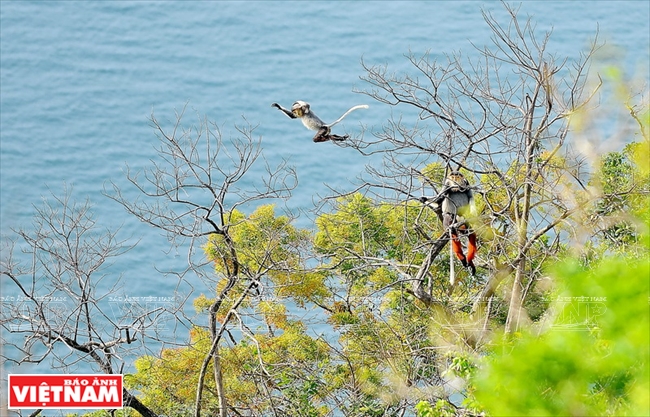
An active little douc. Photo: Thanh Hoa

The douc has ways of sitting similar to humans. Photo: Thanh Hoa
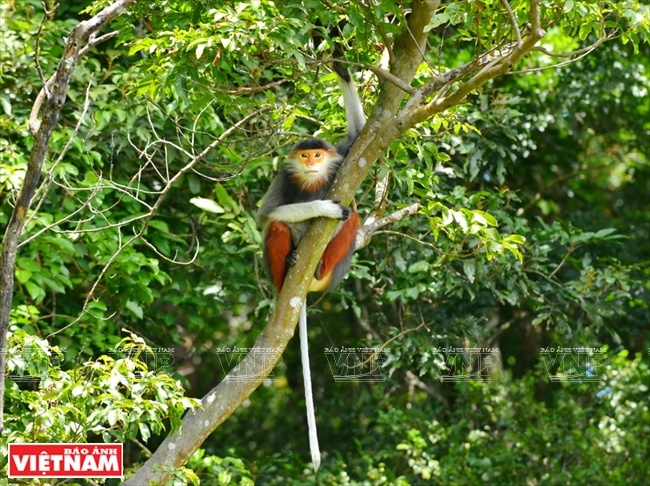
Red-shanked doucs have the most colorful appearance of all primates. Photo: Thanh Hoa
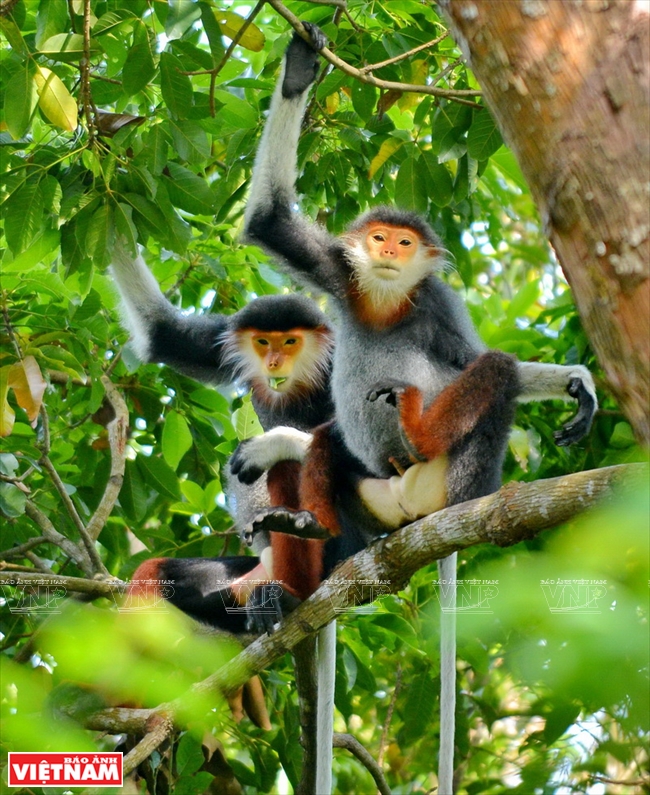
The favorite food of the doucs is tender leaves. Photo: Thanh Hoa
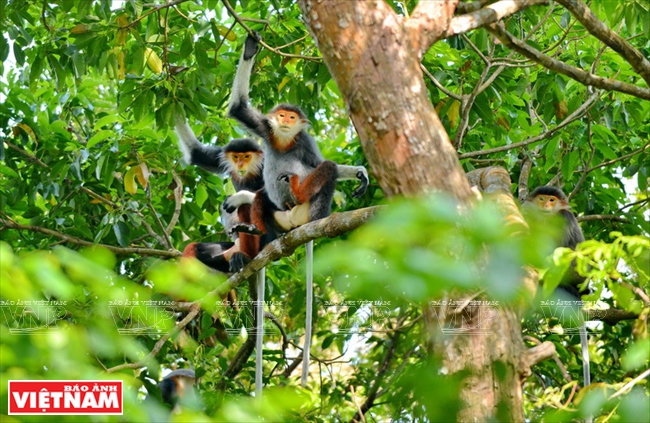
The species lives in groups of between five and seven. Photo: Thanh Hoa
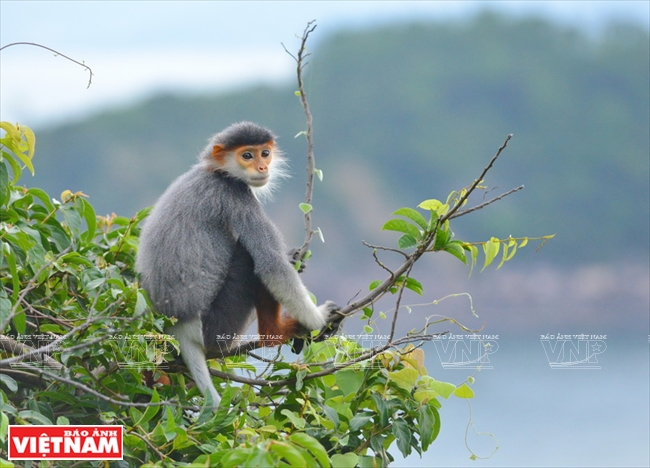
The primate has a beautiful expressive face. Photo: Thanh Hoa
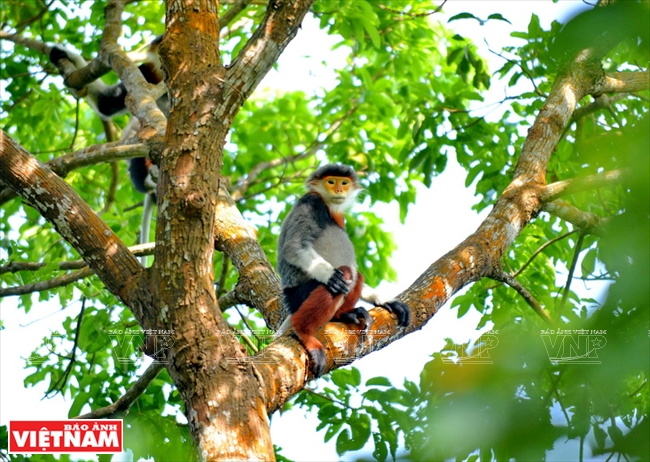
The douc has a big belly. Photo: Thanh Hoa
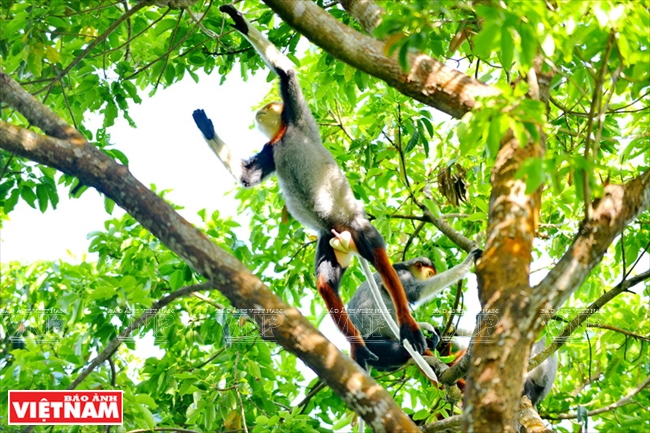
The head of a group is a big, strong male who can protect the others. Photo: Thanh Hoa

Relaxing moments of a douc in a high tree. Photo: Thanh Hoa |
The douc’s special appearance has drawn the major attention of nature lovers and photographers. In recent years, tourists and photographers have flocked to Son Tra during the spring to take photos of this beautiful primate.
Among the people taking pictures are many photographers from Da Nang's Han River Photography Club: Le Hai Son, Thai Hong Ky, Tran Du Dao, Tran Van Dung, Dang Thu Thuy and Ho Trung Tu. They take photos that not only show the beauty of the doucs, but also advocate the protection of this rare species of Son Tra peninsula.
|
Discovered in 1771, the red-shanked douc (Pygathrix nemaeus) is native to Vietnam and Laos and is on the International Union for Conservation of Nature and Natural Resources (IUCN) Red List of Threatened Species. It is prohibited from being traded under the Convention on International Trade in Endangered Species of Wild Fauna and Flora (CITES). |
By Thanh Hoa